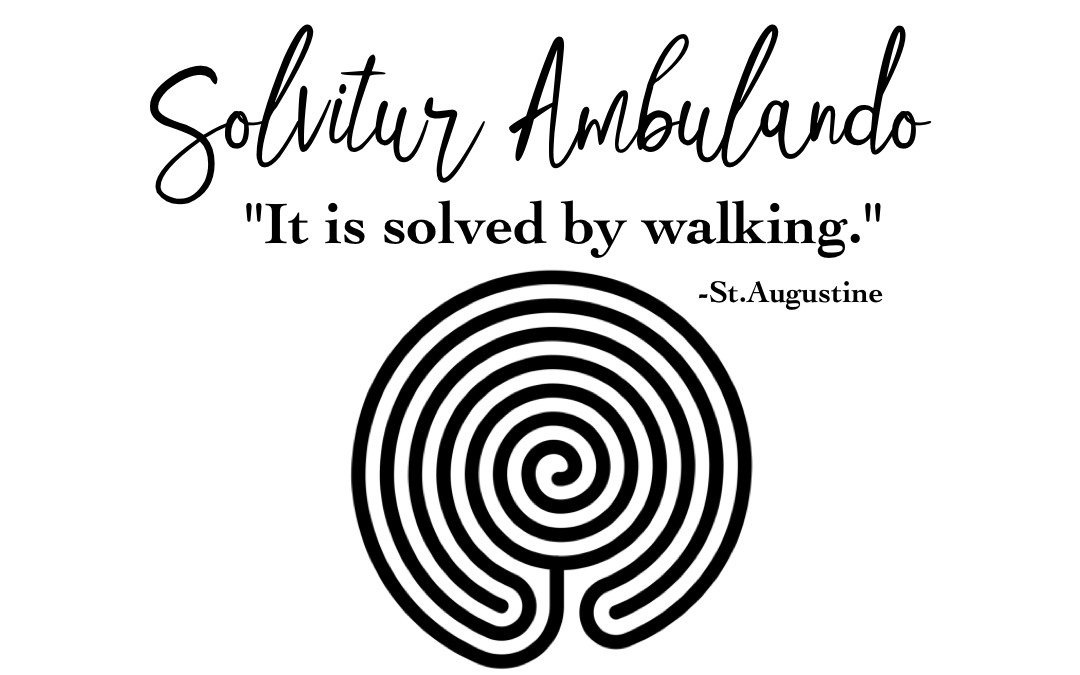This weekend, I spent many joyful hours in my garden. My herbs and vegetables are planted to create a walking labyrinth. It gives me great peace to plant and prune and harvest natures gifts from the earth, and my favorite thing about my garden is walking in it.
I am usually drawn to walk with a question I’d like answers to or insight around. Sometimes, I like to walk to slow down and quiet my thoughts. Some people walk a labyrinth seeking strength or comfort in times of grief or loss. I’ve enjoyed watching children skip, dance and run for the pure joy of being on the path and in the present moment.
A labyrinth can be described as a walking meditation or mindfulness tool. They are generally constructed on the ground so they may be walked along but can also be traced on a page with a finger for similar benefits.
It is interesting to note that a labyrinth is not the same as a maze. In a maze, we are presented with many choices and we must think about which way to go. A labyrinth has only one way in and one way out and so the only choice we have to make it to walk the path or not.
Labyrinths have been found worldwide with ancient and sometimes unknown origins. Labyrinths have been found in cultures all over the world that date as far back as 5,000 years. This makes them an archetype, or pattern, since it is universal to all of humanity. There are many different patterns, but most form a circle, a spiral or a series of spirals symbolizing growth and wholeness.
How to walk a labyrinth
There is no right way or wrong way to walk a labyrinth. These are only suggestions. Enjoy the labyrinth in any way that meets your unique needs and aids your own healing.
- Sit quietly and reflect. Formulate your intention.
- As you walk, breathe, be aware of your body, and find the pace that’s right for you.
- Pause along the way or go directly to the center to sit, kneel or lay down.
Generally there are three stages to the walk:
- Letting go, clearing , releasing or asking a question on the way into the center
- Quietly pausing or receiving in the center
- Taking back out into the world that which you have received
The labyrinth can be enjoyed as a metaphor for the journey to the center of your deepest, most authentic sense of self and back out into the world with an experience of your own inner wisdom, and a broadened understanding of who you are and what you need for health and wellness.
labyrinth related resources
www.labyrinthsociety.org • The Labyrinth Society is an international membership organization, and its website contains educational and experiential resources and services for the international labyrinth community.
www.labyrinthlocator.com • The World-Wide Labyrinth Locator is an easy-to-use database of labyrinths around the world.
www.labyrinthnetworknorthwest.org • Labyrinth Network Northwest (LNN) facilitates communication and cooperation between labyrinth-interested people in the Pacific Northwest.
www.labyrinth-enterprises.com • Labyrinth Enterprises provides information and pricing for portable and permeant labyrinths.
www.gracecathedral.org/community/labyrinths • This website provides information about the indoor and outdoor labyrinths at Grace Cathedral in San Francisco, CA, USA
www.projectlabyrinth.net • Project Labyrinth of Bellingham’s mission is to create, through community support, a public outdoor walking labyrinth in Fairhaven Park.
www.sacred-destinations.com/france/chartres-cathedral • This website contains information and photos of the most famous and widely used Christian labyrinth at Chartres Cathedral in Chartres, France.


